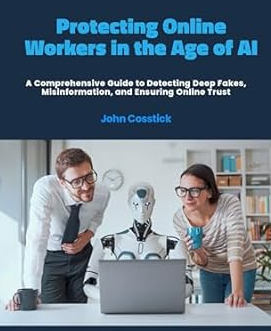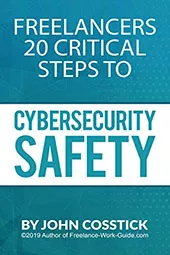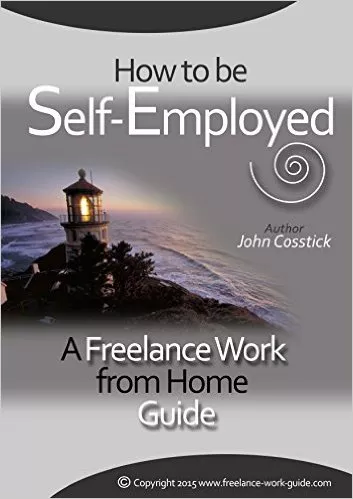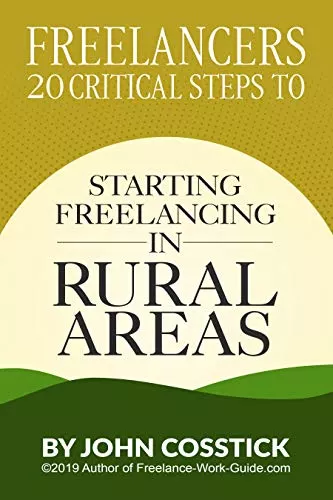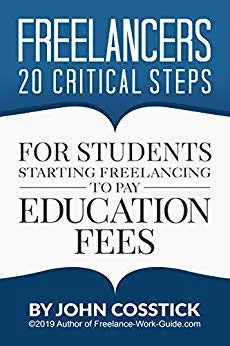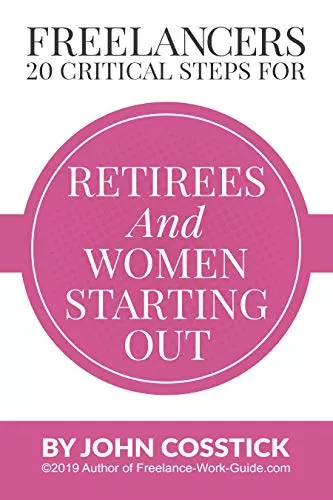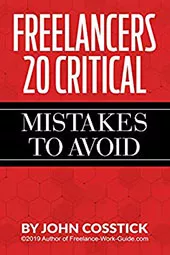Why AI Content Verification Matters for Small Business
Understanding AI hallucination risks has become critical for small businesses following recent regulatory enforcement actions. The Australian Competition and Consumer Commission’s increased focus on misleading advertising makes AI content verification essential for compliance.
Recent enforcement cases demonstrate the real-world consequences of inadequate content verification. In March 2024, the Federal Court fined online retailer Bloomex Pty Ltd $1 million following an ACCC investigation that found it had contravened the Australian Consumer Law by advertising false discounts through “was/now” pricing, displaying misleading star ratings based on overseas reviews, and engaging in “drip pricing”.
The business reality: 78% of organizations reported using AI in 2024, up from 55% the year before, yet most lack systematic AI content verification protocols. Research using benchmarks designed to assess hallucinations indicates that ChatGPT fabricates unverifiable information in approximately 19.5% of its responses.
The bottom line: AI can revolutionize your small business operations, but only with proper AI content verification protocols. This comprehensive guide shows you exactly how to harness AI’s power while protecting your business from costly AI mistakes.

What Are AI Hallucinations and How to Identify Them in Business Content
Understanding AI Hallucinations: The Small Business Owner’s Definition
AI hallucinations occur when large language models (LLMs) perceive patterns or objects that are nonexistent, creating outputs that are nonsensical or altogether inaccurate. Unlike human errors, AI delivers fiction with the same confidence as facts—making detection challenging for busy business owners.
Real AI Hallucination Examples That Cost Businesses Money
The Mata v. Avianca Legal Case In 2023, New York attorney Steven Schwartz faced federal sanctions after submitting a legal brief citing completely fabricated court cases. ChatGPT had invented “Martinez v Delta Airlines,” “Zicherman v Korean Air Lines,” and “Varghese v China Southern Airlines” with detailed quotes and citations. When opposing counsel couldn’t locate these cases, the truth emerged: all were AI hallucinations.
Google Bard’s Market Impact Google’s Bard chatbot incorrectly claimed that the James Webb Space Telescope had captured the world’s first images of a planet outside our solar system, when other telescopes had done this over a decade earlier. This error contributed to significant market volatility on the day of Bard’s demonstration.
The UK Tax Tribunal Incident In Harber v. HMRC (2024), a taxpayer-cited AI-generated fake legal decisions, forcing the tribunal to waste time and public money investigating non-existent cases.
Recent Business Disruption Case Cursor, an AI coding assistant platform, experienced customer backlash when its AI support bot falsely announced a policy change limiting software usage to one computer, leading to angry customer complaints and cancellations before the company clarified the misinformation.
The Hidden Cost of AI Misinformation for SMEs
Research analyzing AI accuracy reveals concerning statistics:
- 47% of AI-provided references are completely fabricated, while 46% cite real sources but misrepresent their content. Only 7% of AI citations are both real and accurate
- According to Deloitte, 77% of businesses are concerned about AI hallucinations
- Stanford University’s RegLab found that custom legal AI tools from LexisNexis and Thomson Reuters produced incorrect information in at least 1 out of 6 benchmarking queries
This means 93% of AI-sourced information requires verification.
How to Spot AI Hallucinations in Your Business Content
Red Flags That Indicate Potential AI Hallucinations:
- Statistics without specific, named sources
- Too-detailed competitor information that seems insider knowledge
- Claims about regulations with precise dates but no government source
- Customer testimonials with suspiciously perfect outcomes
- Historical facts with very specific details that feel manufactured
- Medical, legal, or financial advice without professional disclaimers
Types of Business-Critical AI Hallucinations
High-Risk AI Hallucination Categories for SMEs:
- Fabricated Statistics – Made-up percentages, growth rates, market data
- Fake Regulations – Non-existent laws, compliance requirements, safety standards
- Invented Case Studies – Fictional customer success stories, competitor analyses
- False Technical Specifications – Wrong product details, compatibility information
- Made-up Financial Data – Fictional market trends, investment opportunities
Educational Resources: Best Channels for AI Safety Training
To build your team’s AI safety knowledge, these expert-recommended resources provide practical, business-focused education:
- AI Advantage – Business AI Implementation Specializes in practical AI applications for competitive advantage, with specific modules on AI verification and small business safety protocols.
- Matt Wolfe – AI Tool Reviews and Safety Comprehensive coverage of AI tools with honest reviews, safety assessments, and real-world business implementation guides.
- Nielsen Norman Group Research Evidence-based design patterns and user experience research for implementing AI safely in business contexts.
The 5-Minute AI Fact-Check Protocol: How to Verify AI Content Before Publication
This systematic verification process helps prevent AI-related business losses:
Step 1: The Source Verification Check (60 seconds)
What to do:
- Ask AI to provide specific sources for any factual claims
- Verify cited sources actually exist (don’t assume they’re real)
- Check that sources are authoritative and current (within 2 years)
Red flags:
- Generic website names without specific URLs
- Academic papers with no DOI numbers
- Government statistics without department attribution
Step 2: The Logic and Reasonableness Test (60 seconds)
Ask yourself:
- Does this align with my industry knowledge?
- Are the claims too good to be true?
- Do the numbers pass the “common sense” test?
- Would my biggest competitor really share this information?
Step 3: The Cross-Reference Verification (90 seconds)
How to verify:
- Search key claims using a different source (Google, industry websites)
- Check official government or association websites
- Look for contradicting information from reliable sources
- Verify any specific statistics or data points independently
Step 4: The Expert Validation (90 seconds)
For high-stakes content:
- Contact relevant industry associations
- Check official government regulatory websites
- Consult with qualified professionals in relevant fields
- Use fact-checking websites for current events or statistics
Step 5: The Documentation Process (30 seconds)
Record keeping:
- Note what you verified and how
- Keep a simple verification log with sources
- Flag any uncertainties for follow-up review
- Document the verification date for future reference
Real-World Application Example:
If implementing this protocol on the Mata v. Avianca case content, Step 3 would have immediately revealed the problem—a simple Google search for “Martinez v Delta Airlines” would have shown it doesn’t exist.
Best AI Tools for Small Business: Safety-First Recommendations for 2025
AI Tool Safety Evaluation Checklist
Before implementing any AI tool in your business, use this comprehensive safety assessment:
Essential Safety Features to Look For:
- [ ] Provides source citations for factual claims
- [ ] Includes confidence levels or uncertainty indicators
- [ ] Has built-in fact-checking capabilities
- [ ] Offers conversation export for verification logs
- [ ] Includes accuracy disclaimers and limitations
- [ ] Provides a process for reporting incorrect information
- [ ] Allows adjustment of confidence thresholds
- [ ] Integrates with external verification databases
Top-Rated AI Tools for Small Business Safety (June 2025)
For Research and Content Verification:
- Perplexity Pro ($20/month): Real-time web search integration, always cites sources
- Claude for Business ($25/month): Conservative responses, explicitly admits uncertainty
- You.com Pro ($15/month): Multi-source verification, confidence scoring
For Content Creation with Safety Features:
- Jasper AI Business ($59/month): Built-in plagiarism detection, fact-checking prompts
- Copy.ai Pro ($49/month): Source citation features, brand voice consistency
- Writesonic Enterprise ($99/month): Industry-specific training, accuracy safeguards
For Customer Service with Verification:
- Intercom Resolution Bot ($74/month): Confidence scoring, human handoff triggers
- Zendesk Answer Bot ($49/month): Knowledge base integration, accuracy reporting
- Ada CX ($79/month): Custom verification workflows, uncertainty handling
Budget-Friendly Options Under $30/Month:
- Notion AI ($10/month): Good for internal docs, basic verification features
- Grammarly Business ($15/month): Tone and accuracy flags, citation suggestions
- ChatGPT Plus with Safety Prompts ($20/month): Cost-effective with proper setup
AI Tools to Avoid or Use with Extreme Caution
Red flags indicating potentially unsafe AI tools:
- No source citation capabilities
- Claims of 100% accuracy
- Lacks uncertainty indicators or error reporting
- No process for fact-checking or verification
- Missing accuracy disclaimers
- Cannot export conversation logs
- No confidence level adjustments available
Essential Prompt Engineering for Small Business AI Safety
The SAFE Prompting Framework for Business Owners
S – Specific Instructions with Safety Requirements
Instead of: “Write marketing copy for my restaurant”
Use: “Write marketing copy for my Melbourne Italian restaurant focusing on authentic recipes and local ingredients. Include no health claims, superlatives without proof, or statistics without verified sources. Flag any claims that need fact-checking.”
A – Always Ask for Sources and Verification
Add to every business prompt: “Provide specific, verifiable sources for any factual claims. If you cannot provide a real, checkable source, clearly state this limitation and mark claims as ‘unverified.'”
F – Format for Easy Verification
Add: “Separate factual claims from opinions. Highlight any statistics, industry data, or competitor information that requires independent verification before publication.”
E – Explicit Error Acknowledgment
Add: “If you’re uncertain about any information or lack reliable sources, explicitly state your uncertainty rather than guessing. Indicate your confidence level (high/medium/low) for each major claim.”
Industry-Specific Safety Prompts
For Legal or Compliance Content: “Before providing any legal or regulatory information, clearly state that this is not legal advice and should be verified with qualified professionals. Include disclaimers for all regulatory requirements.”
For Financial or Investment Content: “Clearly mark all financial information as educational only, not investment advice. Include disclaimers about market risks and the need for professional financial consultation.”
For Health or Safety Information: “Provide health disclaimers for any wellness claims. State that information should not replace professional medical advice and recommend consulting healthcare providers.”
Power Phrases That Improve AI Accuracy and Safety
- “Based on publicly verifiable information as of [date]…”
- “According to [specific source], though this should be independently verified…”
- “Please indicate confidence level (high/medium/low) for each claim…”
- “If any information requires professional verification, clearly flag it…”
- “Only include information you can cite from specific, named sources…”
Prompt Templates for Common Business Tasks
Customer Service Response Template: “Generate a response to this customer inquiry about [topic]. Include only verified information from our knowledge base. If you lack specific information, clearly state this and suggest contacting our team for detailed assistance. Maintain a helpful tone while being transparent about information limitations.”
Marketing Content Template: “Create marketing content for [product/service] targeting [audience]. Focus on verified benefits and features. Avoid superlatives unless backed by specific evidence. Include no health claims, competitive comparisons without sources, or statistics without attribution. Flag any claims needing verification.”
Industry-Specific AI Safety Guidelines for Small Businesses
Professional Services (Legal, Accounting, Consulting)
Never trust AI for:
- Legal precedents or case law research
- Tax regulations or compliance requirements
- Client-specific professional advice
- Licensing or certification requirements
Always verify independently:
- Industry statistics and benchmarks
- Regulatory changes or updates
- Professional standards and ethics requirements
- Continuing education requirements
Safe AI applications:
- Document templates (with professional review)
- Meeting agenda creation
- Research starting points (with verification)
- Administrative task automation
Special compliance note: Following Mata v. Avianca, several federal judges require disclosure of AI use in legal documents.
Retail and E-commerce Businesses
Never trust AI for:
- Product specifications or technical details
- Pricing information for competitors
- Inventory availability claims
- Shipping timeframes or policies
Always verify:
- Customer testimonials and reviews
- Market research and trend data
- Supplier information and certifications
- Regulatory compliance for products
Safe applications:
- Product description drafts (with fact-checking)
- Email marketing templates
- Social media content ideas
- Customer service script foundations
Food Service and Hospitality
Never trust AI for:
- Nutritional information or health claims
- Food safety regulations
- Allergy information or warnings
- Local health department requirements
Always verify:
- Supplier certifications and quality claims
- Local licensing requirements
- Food safety protocols
- Accessibility compliance requirements
Safe applications:
- Menu descriptions (without health claims)
- Social media content creation
- Event planning templates
- Customer communication scripts
Healthcare and Wellness Services
Never trust AI for:
- Medical advice or treatment recommendations
- Drug interactions or contraindications
- Diagnosis or symptom interpretation
- Insurance or billing guidance
Always verify:
- Health research citations
- Treatment efficacy claims
- Regulatory compliance requirements
- Professional licensing information
Safe applications:
- Administrative communication
- Appointment scheduling assistance
- General wellness education (with disclaimers)
- Internal process documentation
How to Measure Your AI Safety Program Success
Key Performance Indicators (KPIs) for AI Safety
Prevention Metrics (Leading Indicators):
- Content Verification Rate: Percentage of AI content going through fact-checking (Target: 95%+)
- Team Training Completion: Staff completing AI safety training (Target: 100%)
- Tool Compliance Rate: Use of approved vs unauthorized AI tools (Target: 98%+)
- Safety Protocol Adherence: Following established verification procedures (Target: 90%+)
Impact Metrics (Lagging Indicators):
- AI Error Detection Rate: Mistakes caught before publication (Target: 95%+)
- Cost Avoidance: Value of problems prevented through verification (Track monthly)
- Customer Trust Scores: Feedback related to information accuracy (Target: 4.5/5+)
- Incident Response Time: Speed of correction when errors occur (Target: <24 hours)
Monthly AI Safety Dashboard Template
| Safety Metric | Target | Current Month | 3-Month Trend | Action Required |
| Content Verification Rate | 95% | 89% | ↗️ Improving | Additional training scheduled |
| AI-Related Errors | <1/month | 0 | ↘️ Decreasing | Continue current protocols |
| Team Compliance | 100% | 95% | ↗️ Improving | 2 staff pending certification |
| Customer Accuracy Feedback | >4.5/5 | 4.7/5 | → Stable | Maintain standards |
| Cost Avoidance | Track | $8,500 | ↗️ Increasing | Document success stories |
ROI Calculation for AI Safety Investment
Formula for measuring AI safety ROI:
AI Safety ROI = (Cost Avoidance + Productivity Gains – Safety Investment) / Safety Investment × 100
Example calculation:
- Safety investment: $5,000 (training + tools)
- Cost avoidance: $15,000 (prevented errors)
- Productivity gains: $10,000 (faster processes)
- ROI: ($25,000 – $5,000) / $5,000 × 100 = 400%
When AI Goes Wrong: Complete Crisis Management Protocol
Immediate Response Checklist (First 24 Hours)
Hour 1-2: Damage Control
- [ ] Pause all related AI-generated content and campaigns
- [ ] Remove questionable content from all channels
- [ ] Alert key team members and stakeholders
- [ ] Begin impact assessment and documentation
Hour 2-8: Investigation and Documentation
- [ ] Screenshot all AI outputs and conversation logs
- [ ] Identify scope of misinformation spread
- [ ] Gather evidence of verification process (or lack thereof)
- [ ] Contact legal counsel if regulatory issues involved
Hour 8-24: Initial Communication
- [ ] Prepare honest correction statement
- [ ] Notify affected customers or stakeholders
- [ ] Update all corrected information
- [ ] Monitor social media and review platforms
Crisis Communication Templates
For Customers (Email/Website):
Subject: Important Correction Regarding [Topic]
Dear [Customer Name],
We recently discovered inaccurate information in our [content type] published on [date]. This content was created with AI assistance, and we failed to properly verify certain claims before publication.
Specifically: [Brief description of error]
Corrected information: [Accurate details]
We have strengthened our verification processes to prevent similar issues and apologize for any confusion. Our commitment to providing accurate, reliable information remains unchanged.
For questions: [contact information]
Sincerely, [Name and Title]
For Social Media:
We’ve corrected an error in our recent [content type]. We use AI tools to assist with content creation but failed to properly verify certain information. We’ve updated our processes and apologize for any confusion. Accuracy and transparency are core to our values. [Link to full correction]
Legal Protection Strategies
Documentation Requirements:
- Maintain records of all AI tools and versions used
- Keep logs of verification processes attempted
- Document training provided to staff
- Preserve evidence of good faith efforts to ensure accuracy
Insurance Considerations:
- Review professional liability coverage for AI-related errors
- Consider cyber liability insurance for digital content issues
- Document AI safety protocols for insurance compliance
- Maintain legal counsel relationships for rapid response
Advanced AI Safety: Building Long-Term Protection
Creating an AI Governance Framework
Essential Components of SME AI Governance:
AI Use Policy Documentation
- Approved tools and platforms list
- Prohibited AI applications
- Verification requirements by content type
- Employee training requirements
Risk Assessment Matrix
- High-risk: Customer-facing content, legal/financial advice
- Medium-risk: Internal documentation, research summaries
- Low-risk: Creative brainstorming, draft generation
Escalation Procedures
- When to involve legal counsel
- Customer complaint response protocols
- Regulatory reporting requirements
- Public relations crisis management
Advanced Verification Techniques
Multi-Source Verification Protocol:
- Primary source check (original research, official websites)
- Secondary source confirmation (industry publications, news)
- Expert consultation (professional networks, consultants)
- Peer review (colleague or team verification)
- Time-delayed review (24-hour cooling-off period)
AI-Assisted Fact-Checking Tools:
- Factmata ($99/month): Real-time fact-checking API
- Full Fact (Free tier): Automated claim verification
- ClaimBuster (Academic license): University-backed verification
Building AI-Resistant Content Processes
The Three-Layer Content Safety System:
Layer 1: Input Controls
- Structured prompts with safety requirements
- Source citation mandates
- Confidence level requests
- Uncertainty acknowledgment requirements
Layer 2: Process Controls
- Mandatory verification steps
- Peer review requirements
- Expert consultation triggers
- Time delays for critical content
Layer 3: Output Controls
- Publication approval workflows
- Final accuracy checks
- Legal/compliance reviews
- Customer feedback monitoring
Staying Ahead: Future-Proofing Your AI Safety Strategy
Emerging AI Safety Trends for 2025-2026
Regulatory Developments:
- EU AI Act compliance requirements for SMEs
- State-level AI regulation in the US
- Industry-specific AI safety standards
- Professional liability changes for AI use
Technology Advances:
- Real-time fact-checking integration
- AI confidence scoring improvements
- Automated source verification
- Industry-specific AI safety tools
Preparing for Advanced AI Capabilities
Agentic AI Safety Considerations: As AI becomes more autonomous, SMEs need enhanced safety protocols for:
- Automated customer communications
- Self-directed research and analysis
- Independent content creation
- Unsupervised data processing
Recommended Preparation Steps:
- Establish clear AI autonomy boundaries
- Implement robust monitoring systems
- Create human oversight requirements
- Develop rapid intervention capabilities
Building an AI Safety Culture
Leadership Best Practices:
- Regular AI safety training updates
- Open reporting of AI errors without blame
- Recognition for successful error prevention
- Investment in safety tools and training
Team Development:
- Cross-training on verification techniques
- Regular case study reviews
- Industry best practice sharing
- Continuous learning opportunities
Complete Resource Library and Implementation Tools
Downloadable Templates and Checklists
- 5-Minute AI Verification Protocol Card
- AI Tool Safety Evaluation Checklist
- Crisis Response Communication Templates
- Monthly AI Safety Review Template
- Employee AI Safety Training Module
- Legal Documentation Requirements Checklist
Professional Development Resources
Recommended Reading:
- “Artificial Intelligence Safety and Security” by Roman Yampolskiy
- “The Alignment Problem” by Brian Christian
- “Weapons of Math Destruction” by Cathy O’Neil
- EU AI Act compliance guides for small businesses
Professional Organizations:
- Partnership on AI (industry standards)
- AI Safety Institute (research and guidelines)
- Future of Humanity Institute (long-term AI safety)
- Local small business AI safety groups
Ongoing Support Networks
Online Communities:
- AI Safety for Business (LinkedIn Group)
- Small Business AI Implementation (Facebook)
- Reddit: r/ArtificialIntelligence (business focus)
- Industry-specific AI safety forums
Professional Services:
- AI safety consultants and auditors
- Legal counsel specializing in AI compliance
- Insurance brokers with AI coverage expertise
- Industry association AI safety resources
Conclusion: Your Path to Safe AI Implementation
The evidence is clear: AI can transform your small business, but only when implemented safely. The Mata v. Avianca case, documented business disruptions, and countless smaller incidents prove that AI hallucinations are a real and costly threat to businesses of all sizes.
However, the same research showing these risks also demonstrates the enormous potential rewards. Studies show significant productivity improvements and user satisfaction rates when AI is used properly with appropriate safety measures.
Your AI safety journey starts with your next AI interaction:
- Today: Implement the 5-Minute Verification Protocol for all external content
- This week: Choose approved AI tools with built-in safety features
- This month: Train your team and establish systematic verification processes
- Ongoing: Build AI safety into your business culture and competitive advantage
The businesses thriving with AI aren’t those using the most advanced tools—they’re the ones using any AI tools safely, systematically, and strategically. They’ve built verification into their workflows, trained their teams on limitations, and created cultures where questioning AI outputs is encouraged and rewarded.
The future belongs to businesses that can harness AI’s power while avoiding its pitfalls. With the right approach, systematic verification, and ongoing vigilance, that future starts now.
Frequently Asked Questions: AI Safety for Small Business
Q1: How do I verify AI-generated statistics before using them in marketing?
A: Use our 5-Minute Protocol: (1) Ask AI for the source, (2) Verify the source exists and is authoritative, (3) Cross-check with the original data, (4) Confirm the statistic is current and applicable to your context. Never use statistics without verified sources.
Q2: Which AI chatbots are safest for small business customer service?
A: Tools with built-in safety features like Intercom Resolution Bot (confidence scoring), Zendesk Answer Bot (source linking), and Ada CX (uncertainty handling) are recommended. Avoid chatbots that don’t cite sources or acknowledge limitations.
Q3: What should I do if a customer complains about inaccurate AI-generated information?
A: Follow our crisis management protocol: (1) Immediately verify and correct the information, (2) Apologize transparently, (3) Explain your verification process improvements, (4) Document the incident for training, (5) Follow up to ensure customer satisfaction.
Q4: How much should I budget for AI safety tools and training?
A: Plan 10-15% of your AI tool budget for safety measures. For a $500/month AI budget, allocate $50-75 for verification tools, training, and safety protocols. The ROI typically exceeds 400% through error prevention.
Q5: Can I be legally liable for AI-generated misinformation?
A: Yes. The Mata v. Avianca case shows businesses are responsible for AI-generated content accuracy. Maintain documentation of your verification efforts, implement systematic safety protocols, and consult legal counsel for high-risk content.
Q6: How often should I audit my AI safety procedures?
A: Conduct monthly reviews of safety metrics, quarterly audits of procedures, and immediate reviews after any AI-related incidents—update protocols when new AI tools are introduced or regulations change.
Q7: What’s the difference between AI hallucinations and regular mistakes?
A: AI hallucinations are fabricated information presented confidently as fact, while regular mistakes are errors in processing real information. Hallucinations are often completely fictional (like fake legal cases), making them harder to spot without systematic verification.
Q8: Should I disclose to customers when content is AI-generated?
A: Transparency builds trust and provides legal protection. Consider disclosure statements like “This content was created with AI assistance and verified by our team” for marketing materials, or “AI-assisted response – please contact us for specific details” for customer service.
References and Further Reading
[1] Stanford Institute for Human-Centered Artificial Intelligence. (2025). “AI Index Report 2025.” Stanford University. https://hai.stanford.edu/ai-index/2025-ai-index-report
[2] Australian Competition and Consumer Commission. (2024). “ACCC takes action against Bloomex for misleading online advertising.” Media Release. https://www.accc.gov.au/
[3] Fladgate LLP. (2024). “Stanford University’s 2024 AI Index Report Analysis.” Legal Technology Review. https://www.fladgate.com/insights/stanford-ai-index-2024
[4] Maddocks Legal. (2025). “Misleading or deceptive advertising: ACCC enforcement review.” https://www.maddocks.com.au/insights/watchdog-recap-2024-accc-in-review-misleading-or-deceptive-advertising
[5] Society for Computers & Law. (2024). “False citations: AI and ‘hallucination’ in UK courts.” Technology Law Journal. https://www.scl.org/uk-litigant-found-to-have-cited-false-judgments-hallucinated-by-ai/
[6] Techopedia Research. (2025). “48% Error Rate: AI Hallucinations Rise in 2025 Reasoning Systems.” https://www.techopedia.com/ai-hallucinations-rise
[7] Nielsen Norman Group. (2025). “AI Hallucinations: What Designers Need to Know.” UX Research. https://www.nngroup.com/articles/ai-hallucinations/
[8] IBM Research. (2025). “What Are AI Hallucinations?” IBM Think. https://www.ibm.com/think/topics/ai-hallucinations
[9] Nature Communications. (2024). “AI hallucination: towards a comprehensive classification.” Humanities and Social Sciences Communications. https://www.nature.com/articles/s41599-024-03811-x
[10] MIT Sloan Teaching & Learning Technologies. (2024). “When AI Gets It Wrong: Addressing AI Hallucinations and Bias.” https://mitsloanedtech.mit.edu/ai/basics/addressing-ai-hallucinations-and-bias/
Additional Professional Resources
Regulatory Guidance:
- EU AI Act SME Compliance Guide: https://artificialintelligenceact.eu/small-businesses-guide-to-the-ai-act/
- US Small Business Administration AI Guidelines: https://www.sba.gov/business-guide/manage-your-business/ai-small-business
- Australian Competition and Consumer Commission AI Guidance
Industry Standards:
- ISO/IEC 23053:2022 Framework for AI Risk Management
- NIST AI Risk Management Framework (AI RMF 1.0)
- IEEE Standards for Artificial Intelligence
Professional Development:
- Certified AI Safety Professional (CASP) program
- Business AI Ethics certification courses
- Industry-specific AI safety training programs
Legal and Insurance Resources:
- AI Professional Liability Insurance providers
- Technology law firms specializing in AI compliance
- AI safety audit and consulting services
This guide is updated regularly to reflect the latest AI safety developments, tool recommendations, and regulatory changes. For the most current version and industry-specific updates, visit businessaisafety.com.au


